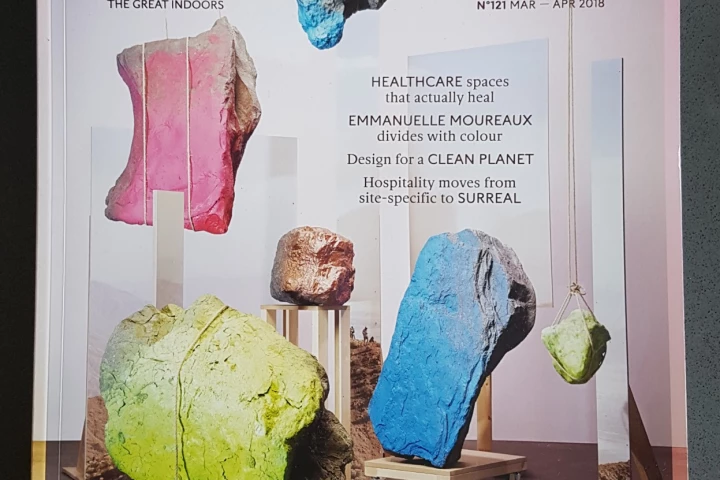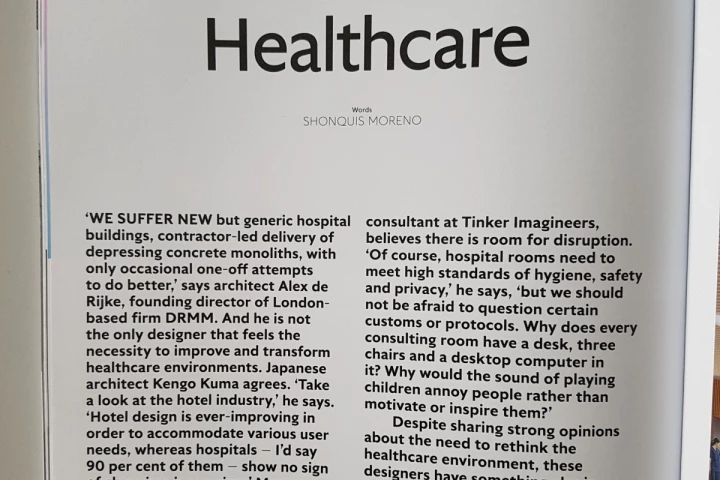we are experience designers
frame magazine features tinker's healthcare design strategy for coach




Frame magazine featured COACH in the FRAME LAB of the March - April issue (No 121) as an example of humanizing healthcare. 'Science and technology are pushing healthcare forward at fast pace', states Frame, 'and spaces devoted to healthcare need to follow suit. As the effects of a patient's physical surroundings become more and more evident, traditionally designed medical facilities are being replaced by human-centric, service-orientated healing environments that are created to ease treatment and, ultimately, to stimulate recovery'.
Ralf Lambie, creative consultant at Tinker imagineers, believes there is room for disruption. 'Of course hospital rooms need to meet high standards of hygiene, safety and privacy,' he says, 'but we should not be afraid to question certain customs or protocols. Why does every consulting room have a desk, three chairs and a desktop computer in it? Why would the sound of playing children annoy people rather than motivate or inspire them?' Despite a strong opinion about the need to rethink the healthcare environment, Tinker has been commissioned to put their ideas into practise.
Transform treatment into play
For certain forms of recovery, spaces should activate, motivate and empower both mind and body. Alhtough nobody goes to the hospital for fun, fun can stimulate recovery. Especially for children, becoming ill doesn't mean they stop playing altogether. Their urge for activity should be supported with stimulating interactive architecture.
The experience architects of Utrecht-based Tinker imagineers understand the desire for play. For a temporary location of COACH - the Centre for Overweight Adolescent and Children's Healthcare of the Maastricht UMC+, where staff coach kids to live a healthier and more active life - the architects made a demoutable environment, a space that's been reused for the permanent (and current) location.
At COACH, play is half the treatment. Consultations take place in colourful pavilions, while intersecting lines and surfaces are reminiscent of a mashup of various playing fields. An array of interactive games require stretching, climbing, swinging, riding, moving and working together. In the open waiting room, where nobody actually waits, 'treatment' starts before the appointment does. Tinker's design strategy proved successful: 70 per cent of the participants lose weight and adopt a healthier lifestyle under the supervision of COACH.
The programme's founder, Anita Vreugdenhil, offers a positive assessment: 'In the interactive environment, children feel at home and tend to start exploring. They learn about a healthy lifestyle without any pressure. The room does not refer to a hospital environment, and the playful consulting rooms help us to keep it light.'